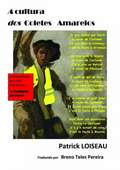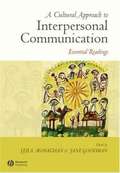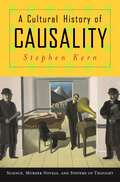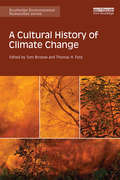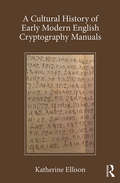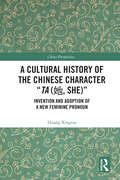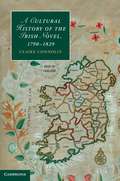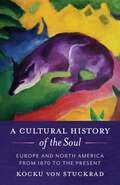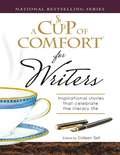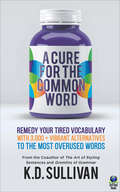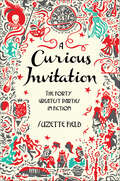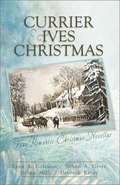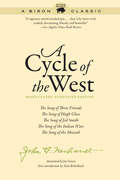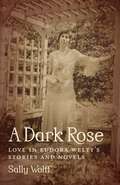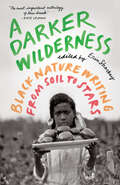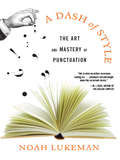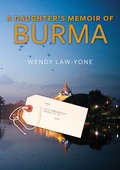- Table View
- List View
A Cultura dos Coletes Amarelos: Acompanhado por uma referência a A Comuna de Paris
by Patrick Loiseau"Sim, existe uma cultura dos “coletes amarelos”... Quero dizer que esse movimento nascido do inevitável e (portanto) do imprevisível criou seus cânones culturais, apesar de tudo que se possa culpá-lo: o francês esgarçado, os erros de ortografia, a “violência”, a mistura de valores, etc. Ele pode ter ido além do movimento estudantil e, em seguida, da greve geral de maio-junho e 1968. Vou tentar mostrar isto neste livro, por meio de múltiplos desenhos, caricaturas, fotos, logotipos e slogans, etc. Adicionarei os esclarecimentos necessários sobre o contexto social em um clima recorrente de crise política... Esta pintura, que veste o retrato imperfeito e não exaustivo de uma insurreição, não almeja o enciclopedismo, mas apenas trazer justiça a um movimento que tentou quebrar as correntes da pobreza e derrubar, para além do governo autocrático macroniano, uma sociedade egoísta e cada vez mais ditatorial.
A Cultural Approach to Interpersonal Communication
by Leila Frances Monaghan Jane E. GoodmanThis reader connects interpersonal communication and culture, primarily but not exclusively through an anthropological, ethnographic lens. Monaghan (interpersonal communication, Indiana U.) and Goodman (communication and culture, Indiana U.) have chosen 42 pieces that generally share a performance-based approach to communication and culture that emphasizes the dynamic and creative role language plays in the construction of social reality. Combining theoretical discussions and ethnographic case studies, the contributions have been organized into three sections that first provide an introduction to cultural, ethnographic, and performance-based approaches to personal communication; explore the use of linguistic meaning, form, and function for social purposes and link language to social identity; place questions of interpersonal communication into the context of social groups; and discuss how interpersonal interactions shape and are shaped by institutional settings. Annotation ©2007 Book News, Inc., Portland, OR (booknews.com)
A Cultural Citizen of the World: Sigmund Freud's Knowledge and Use of British and American Writings
by S. S. PrawerThis book is based on the German editions of Sigmund Freud's works and letters. It presents various examples from English and American literatures that suggest several questions Freud asked of literary works in general.
A Cultural History of Causality: Science, Murder Novels, and Systems of Thought
by Stephen KernThis pioneering work is the first to trace how our understanding of the causes of human behavior has changed radically over the course of European and American cultural history since 1830. Focusing on the act of murder, as documented vividly by more than a hundred novels including Crime and Punishment, An American Tragedy, The Trial, and Lolita, Stephen Kern devotes each chapter of A Cultural History of Causality to examining a specific causal factor or motive for murder--ancestry, childhood, language, sexuality, emotion, mind, society, and ideology. In addition to drawing on particular novels, each chapter considers the sciences (genetics, endocrinology, physiology, neuroscience) and systems of thought (psychoanalysis, linguistics, sociology, forensic psychiatry, and existential philosophy) most germane to each causal factor or motive. Kern identifies five shifts in thinking about causality, shifts toward increasing specificity, multiplicity, complexity, probability, and uncertainty. He argues that the more researchers learned about the causes of human behavior, the more they realized how much more there was to know and how little they knew about what they thought they knew. The book closes by considering the revolutionary impact of quantum theory, which, though it influenced novelists only marginally, shattered the model of causal understanding that had dominated Western thought since the seventeenth century. Others have addressed changing ideas about causality in specific areas, but no one has tackled a broad cultural history of this concept as does Stephen Kern in this engagingly written and lucidly argued book.
A Cultural History of Climate Change (Routledge Environmental Humanities)
by Tom Bristow Thomas H. FordCharting innovative directions in the environmental humanities, this book examines the cultural history of climate change under three broad headings: history, writing and politics. Climate change compels us to rethink many of our traditional means of historical understanding, and demands new ways of relating human knowledge, action and representations to the dimensions of geological and evolutionary time. To address these challenges, this book positions our present moment of climatic knowledge within much longer histories of climatic experience. Only in light of these histories, it argues, can we properly understand what climate means today across an array of discursive domains, from politics, literature and law to neighbourly conversation. Its chapters identify turning-points and experiments in the construction of climates and of atmospheres of sensation. They examine how contemporary ecological thought has repoliticised the representation of nature and detail vital aspects of the history and prehistory of our climatic modernity. This ground-breaking text will be of great interest to researchers and postgraduate students in environmental history, environmental governance, history of ideas and science, literature and eco-criticism, political theory, cultural theory, as well as all general readers interested in climate change.
A Cultural History of Early Modern English Cryptography Manuals
by Katherine EllisonDuring and after the English civil wars, between 1640 and 1690, an unprecedented number of manuals teaching cryptography were published, almost all for the general public. While there are many surveys of cryptography, none pay any attention to the volume of manuals that appeared during the seventeenth century, or provide any cultural context for the appearance, design, or significance of the genre during the period. On the contrary, when the period’s cryptography writings are mentioned, they are dismissed as esoteric, impractical, and useless. Yet, as this book demonstrates, seventeenth-century cryptography manuals show us one clear beginning of the capitalization of information. In their pages, intelligence—as private message and as mental ability—becomes a central commodity in the emergence of England’s capitalist media state. Publications boasting the disclosure of secrets had long been popular, particularly for English readers with interests in the occult, but it was during these particular decades of the seventeenth century that cryptography emerged as a permanent bureaucratic function for the English government, a fashionable activity for the stylish English reader, and a respected discipline worthy of its own genre. These manuals established cryptography as a primer for intelligence, a craft able to identify and test particular mental abilities deemed "smart" and useful for England’s financial future. Through close readings of five specific primary texts that have been ignored not only in cryptography scholarship but also in early modern literary, scientific, and historical studies, this book allows us to see one origin of disciplinary division in the popular imagination and in the university, when particular broad fields—the sciences, the mechanical arts, and the liberal arts—came to be viewed as more or less profitable.
A Cultural History of Translation in Early Modern Japan
by Rebekah ClementsThe translation of texts has played a formative role in Japan's history of cultural exchange as well as the development of literature, and indigenous legal and religious systems. This is the first book of its kind, however, to offer a comprehensive survey of the role of translation in Japan during the Tokugawa period, 1600-1868. By examining a wide range of translations into Japanese from Chinese, Dutch and other European texts, as well as the translation of classical Japanese into the vernacular, Rebekah Clements reveals the circles of intellectual and political exchange that existed in early modern Japan, arguing that, contrary to popular belief, Japan's 'translation' culture did not begin in the Meiji period. Examining the 'crisis translation' of military texts in response to international threats to security in the nineteenth century, Clements also offers fresh insights into the overthrow of the Tokugawa shogunate in 1868.
A Cultural History of Underdevelopment: Latin America in the U.S. Imagination (New World Studies)
by John Patrick LearyA Cultural History of Underdevelopment explores the changing place of Latin America in U.S. culture from the mid-nineteenth century to the recent U.S.-Cuba détente. In doing so, it uncovers the complex ways in which Americans have imagined the global geography of poverty and progress, as the hemispheric imperialism of the nineteenth century yielded to the Cold War discourse of "underdevelopment." John Patrick Leary examines representations of uneven development in Latin America across a variety of genres and media, from canonical fiction and poetry to cinema, photography, journalism, popular song, travel narratives, and development theory. For the United States, Latin America has figured variously as good neighbor and insurgent threat, as its possible future and a remnant of its past. By illuminating the conventional ways in which Americans have imagined their place in the hemisphere, the author shows how the popular image of the United States as a modern, exceptional nation has been produced by a century of encounters that travelers, writers, radicals, filmmakers, and others have had with Latin America. Drawing on authors such as James Weldon Johnson, Willa Cather, and Ernest Hemingway, Leary argues that Latin America has figured in U.S. culture not just as an exotic "other" but as the familiar reflection of the United States' own regional, racial, class, and political inequalities.
A Cultural History of the Chinese Character “Ta: Invention and Adoption of a New Feminine Pronoun (China Perspectives)
by Huang XingtaoThis book offers a thorough examination of the history of a Chinese female pronoun – the Chinese character "Ta (她, She)" and demonstrates how the invention and identification of this new word is inextricably intertwined with matters of sociocultural politics. The Chinese character Ta for the third-person feminine singular pronoun was introduced in the late 1910s when the voices of women’s liberation rang out in China. The invention and dissemination of this word not only reflected an ideological gendering of the Chinese script but also provoked heated academic and popular debate well into the 1930s. Thus, the history of Ta provides a prism through which to explore modern Chinese history. The author provides an ambitious and informed examination of how Ta was invented and promoted in relation to the gender equality movement, the politics of neologism, and other domestic elements and international catalysts. This book is the first major work to survey Ta’s creation. It draws on diverse sources, including interviews with eight historians who experienced the popularisation of Ta as youths in the 1930s and 40s. This book will be an essential read for students and scholars of East Asian Studies, Chinese Cultural History, and those who are interested in the history of China.
A Cultural History of the English Language (The English Language Series)
by Gerry KnowlesThis book presents a new interpretation of the history of English. Access to large corpuses of English has allowed scholars to assess the minutiae of linguistic change with much greater precision than before, often pinpointing the beginnings of linguistic innovations in place and time. The author uses the findings from this research to relate major historical events to change in the language, in particular to areas of linguistic inquiry that have been of particular importance in recent years, such as discourse analysis, stylistics and work on pidgins and creoles. The book does not attempt to chronicle changes in syntax or pronunciation and spelling, but is designed to complement a corpus-based study of formal changes. The story of English is brought up to the late 1990s to include, amongst other things, discussions of Estuary English and the implications of the information superhighway.
A Cultural History of the Irish Novel, 1790–1829
by Claire ConnollyClaire Connolly offers a cultural history of the Irish novel in the period between the radical decade of the 1790s and the gaining of Catholic Emancipation in 1829. These decades saw the emergence of a group of talented Irish writers who developed and advanced such innovative forms as the national tale and the historical novel: fictions that took Ireland as their topic and setting and which often imagined its history via domestic plots that addressed wider issues of dispossession and inheritance. Their openness to contemporary politics, as well as to recent historiography, antiquarian scholarship, poetry, song, plays and memoirs, produced a series of notable fictions; marked most of all by their ability to fashion from these resources a new vocabulary of cultural identity. This book extends and enriches the current understanding of Irish Romanticism, blending sympathetic textual analysis of the fiction with careful historical contextualization.
A Cultural History of the Soul: Europe and North America from 1870 to the Present
by Kocku von StuckradThe soul, which dominated many intellectual debates at the beginning of the twentieth century, has virtually disappeared from the sciences and the humanities. Yet it is everywhere in popular culture—from holistic therapies and new spiritual practices to literature and film to ecological and political ideologies. Ignored by scholars, it is hiding in plain sight in a plethora of religious, psychological, environmental, and scientific movements.This book uncovers the history of the concept of the soul in twentieth-century Europe and North America. Beginning in fin de siècle Germany, Kocku von Stuckrad examines a fascination spanning philosophy, the sciences, the arts, and the study of religion, as well as occultism and spiritualism, against the backdrop of the emergence of experimental psychology. He then explores how and why the United States witnessed a flowering of ideas about the soul in popular culture and spirituality in the latter half of the century.Von Stuckrad examines an astonishingly wide range of figures and movements—ranging from Ernest Renan, Martin Buber, and Carl Gustav Jung to the Esalen Institute, deep ecology, and revivals of shamanism, animism, and paganism to Rachel Carson, Ursula K. Le Guin, and the Harry Potter franchise. Revealing how the soul remains central to a culture that is only seemingly secular, this book casts new light on the place of spirituality, religion, and metaphysics in Europe and North America today.
A Culture of Rights: Law, Literature, and Canada
by Benjamin James AuthersWith the passage into law of the Canadian Charter of Rights and Freedoms in 1982, rights took on new legal, political, and social significance in Canada. In the decades following, Canadian jurisprudence has emphasised the importance of rights, determining their shape and asserting their centrality to legal ideas about what Canada represents. At the same time, an increasing number of Canadian novels have also engaged with the language of human rights and civil liberties, reflecting, like their counterparts in law, the possibilities of rights and the failure of their protection.In A Culture of Rights, Benjamin Authers reads novels by authors including Joy Kogawa, Margaret Atwood, Timothy Findley, and Jeanette Armstrong alongside legal texts and key constitutional rights cases, arguing for the need for a more complex, interdisciplinary understanding of the sources of rights in Canada and elsewhere. He suggests that, at present, even when rights are violated, popular insistence on Canada's rights-driven society remains. Despite the limited scope of our rights, and the deferral of more substantive rights protections to some projected, ideal Canada, we remain keen to promote ourselves as members of an entirely just society.
A Cup of Comfort for Writers
by Colleen SellAs every writer knows, keeping the faith isn't always easy. On those days when you find yourself literally at a loss for words, you may long for a little writer's TLC. In A Cup of Comfort for Writers, you'll meet more than fifty writers who, just like you, have faced down that empty page and won! From a woman who enters an elite writing program at the age of forty, and proceeds to blow "the pros" away, to a man who wins his wife's hand by writing her countless love letters. Whether you're already published or as yet undiscovered, A Cup of Comfort for Writers will inspire you, motivate you, and fuel the fire that keeps you writing.
A Cup of Comfort for Writers: Inspirational Stories that Celebrate the Literary Life
by Colleen SellAs every writer knows, keeping the faith isn't always easy. On those days when you find yourself literally at a loss for words, you may long for a little writer's TLC. In A Cup of Comfort for Writers, you'll meet more than fifty writers who, just like you, have faced down that empty page and won! From a woman who enters an elite writing program at the age of forty, and proceeds to blow "the pros" away, to a man who wins his wife's hand by writing her countless love letters. Whether you're already published or as yet undiscovered, A Cup of Comfort for Writers will inspire you, motivate you, and fuel the fire that keeps you writing.
A Cure for the Common Word: Remedy Your Tired Vocabulary with 3,000 + Vibrant Alternatives to the Most Overused Words
by K.D. SullivanWhen &“good&” isn&’t good enough, make your vocabulary splendid, stupendous, and electrifying with this guide to words that really say something. Your brain holds an impressive vocabulary of more than twenty-thousand words, but chances are you only use a small fraction of them. That fraction is usually filled with worn-out oldies that have lost their impact—and perhaps even their meaning—such as interesting, basic, and nice. If this diagnosis fits your ailing communication skills, here&’s your prescription: a unique vocabulary guide offering more than three-thousand impressive, precise, and engaging alternatives to the one-hundred most overused words. Arranged alphabetically, each overused word—from absolutely and awesome to want, weird, and well—is given more than fifteen alternatives that might better communicate your meaning. Along with a list of synonyms, each common word is accompanied by definitions, sample sentences, witty quotes, explanations of why the word fails to communicate, and much more.
A Curious Invitation: The Forty Greatest Parties in Fiction
by Suzette FieldForty of the greatest fictional festivities as seen through the eyes of the world's greatest writers.People love to party. And writers love to attend and document these occasions. The party is a useful literary device, not only for social commentary and satire but also as an occasion where characters can meet, fall in and out of love, or even get murdered.A Curious Invitation is a humorous and informative guide to literature's most memorable parties. Some of these parties are depictions of real events, like the Duchess of Richmond's ball on the eve of battle with Napoleon in Thackeray's Vanity Fair; others draw on the authors' experience of the society they lived in, such as Lady Metroland's party in Evelyn Waugh's Vile Bodies; while others come straight from the writer's bizarre imagination, like Douglas Adams' flying party above an unknown planet from The Hitchhiker's Guide to the Galaxy.Witty, entertaining, and full of fabulous detail, A Curious Invitation offers readers the chance to crash some of the great parties in literary history.
A Curious Peril: H.D.’s Late Modernist Prose
by Lara VetterChoice Outstanding Academic Title A Curious Peril examines the prose penned by modernist writer H.D. in the aftermath of World War II, a little-known body of work that has been neglected by scholars, and argues that the trauma H.D. experienced in London during the war profoundly changed her writing. Lara Vetter reveals a shift in these writings from classical "escapist" settings to politically aware explorations of gender, spirituality, nation, and imperialism. Impelled by the shocking political crises of the early 1940s, and increasingly sensitive to imperialist logics, H.D. began to write about the history of modern Europe using innovative forms and genres. She directed her well-known interest in mysticism and otherworldly themes toward the material world of empire-building and perpetual war. Vetter contends that H.D.'s postwar work is essential to understanding the writer's entire career, marking her entrance into late modernism and even foretelling crucial aspects of postmodernism.
A Currier and Ives Christmas: Four Stories of Love Come to Life from the Canvas of Classic Christmas Art
by Diann Mills Lynn A. Coleman Deborah Raney Joann A. GroteThe artistry of renowned lithographers Currier & Ives captures the beauty and nostalgia of simpler days and Christmases past. Yet, while a picture may be worth a thousand words, there are times when even the best illustrations leave viewers with a yearning to know more. Inspired by the classic American art of Currier & Ives, these seasonal love stories delve deep inside the artists' portrayals to imagine and illustrate the untold tales behind each wintry scene. Look beyond the art to discover the heartwarming stories of holiday love of yesteryear in A Currier & Ives Christmas.
A Cycle of the West, Bison Classic Annotated Edition: The Song of Three Friends, The Song of Hugh Glass, The Song of Jed Smith, The Song of the Indian Wars, The Song of the Messiah
by John G. Neihardt Alan BirkelbachA Cycle of the West rewards its readers with a sweeping saga of the American West and John G. Neihardt’s exhilarating vision of frontier history. It is infused with wonder, nostalgia, and a keen appreciation of epic history. Unquestionably the masterpiece of the poet who has been called the “American Homer,” A Cycle of the West celebrates the land and legends of the Old West in five narrative poems: The Song of Three Friends (1919), The Song of Hugh Glass (1915), The Song of Jed Smith (1941), The Song of the Indian Wars (1925), and The Song of the Messiah (1935). This unforgettable epic of discovery, conquest, courage, and tragedy speaks movingly and resoundingly of a unique American experience. The new introduction by former Texas poet laureate Alan Birkelbach and annotations by Joe Green present fresh views of Neihardt’s iconic work.
A Dark Rose: Love in Eudora Welty's Stories and Novels (Southern Literary Studies)
by Sally WolffFrom the heartbroken protagonist she depicted in her first published story, "Death of a Traveling Salesman," to the reflective widow she described in her last novel, The Optimist's Daughter, Eudora Welty wrote realistically about the shadows and radiance of love. In a meticulous exploration of this theme, Sally Wolff combines new readings of Welty's fiction with contextual information and background drawn from a nineteen-year friendship with Welty. A common image in much of Welty's fiction, the rose has traditionally symbolized love in literature. Wolff argues that the dark rose-from the height of its brilliance to the end of its life-serves as an apt metaphor for the dichotomies Welty presents, equally suggestive of beauty and sadness, as well as the comic, tragic, and mysterious qualities of love. While some of Welty's characters seem autobiographical-a daughter remembering her parents' marriage or a broodingly hopeful member of a large family wedding-at times Welty analyzes from a distance the dynamics of successful and troubled loving relationships. Although Welty experienced love several times during her life, she never married, and Wolff argues that this vantage point allowed Welty to write from an objective perspective in her fiction about the varied dimensions of love. A Dark Rose explores several texts to examine Welty's nuanced and intricate portrayals of love. Though love in Welty's fiction fails, wears thin, and even faces death-it remains a vital force in her characters' lives.
A Darker Wilderness: Black Nature Writing From Soil to Stars
by Erin SharkeyA vibrant collection of personal and lyric essays in conversation with archival objects of Black history and memory. <P><P> What are the politics of nature? Who owns it, where is it, what role does it play in our lives? Does it need to be tamed? Are we ourselves natural? In A Darker Wilderness, a constellation of luminary writers reflect on the significance of nature in their lived experience and on the role of nature in the lives of Black folks in the United States. Each of these essays engages with a single archival object, whether directly or obliquely, exploring stories spanning hundreds of years and thousands of miles, traveling from roots to space and finding rich Blackness everywhere. <P><P> Erin Sharkey considers Benjamin Banneker’s 1795 almanac, as she follows the passing of seasons in an urban garden in Buffalo. Naima Penniman reflects on a statue of Haitian revolutionary François Makandal, within her own pursuit of environmental justice. Ama Codjoe meditates on rain, hair, protest, and freedom via a photo of a young woman during a civil rights demonstration in Alabama. And so on—with wide-ranging contributions from Carolyn Finney, Ronald Greer II, Alexis Pauline Gumbs, Sean Hill, Michael Kleber-Diggs, Glynn Pogue, Katie Robinson, and Lauret Savoy—unearthing evidence of the ways Black people’s relationship to the natural world has persevered through colonialism, slavery, state-sponsored violence, and structurally racist policies like Jim Crow and redlining. <P><P> A scrapbook, a family chest, a quilt—and an astounding work of historical engagement and literary accomplishment—A Darker Wilderness is a collection brimming with abundance and insight.
A Dash of Style: The Art and Mastery of Punctuation
by Noah Lukeman"Takes the straitjacket off punctuation....Lukeman's wit and insight make this an instant classic."--M. J. Rose The first practical and accessible guide to the art of punctuation for creative writers. Punctuation reveals the writer: haphazard commas, for example, reveal haphazard thinking; clear, lucid breaks reveal clear, lucid thinking. Punctuation can be used to teach the writer how to think and how to write. This short, practical book shows authors the benefits that can be reaped from mastering punctuation: the art of style, sentence length, meaning, and economy of words. There are full-length chapters devoted to the period, the comma, the semicolon, the colon, quotation marks, the dash and parentheses, the paragraph and section break, and a cumulative chapter on integrating them all into "The Symphony of Punctuation." Filled with exercises and examples from literary masters (Why did Poe and Melville rely on the semicolon? Why did Hemingway embrace the period?), A Dash of Style is interactive, highly engaging, and a necessity for creative writers as well as for anyone looking to make punctuation their friend instead of their mysterious foe.
A Daughter's Memoir of Burma
by Wendy Law-Yone David I. SteinbergWendy Law-Yone was fifteen at the time of Burma's military coup in 1962. The daughter of Ed Law-Yone, daredevil proprietor of Rangoon Nation, Burma's leading postwar English-language daily, she experienced firsthand the perils and promises of a newly independent Burma.On the eve of Wendy's studies abroad, Ed Law-Yone was arrested, his newspaper shut down, and Wendy herself was briefly imprisoned. After his release, Ed fled to Thailand with his family, where he formed a government-in-exile and tried, unsuccessfully, to foment a revolution. Emigrating to America with his wife and children, Ed never gave up hope that Burma would adopt a new democratic government. While he died disappointed, he left in his daughter's care an illuminating trove of papers documenting the experiences of an eccentric, ambitious, humorous, and determined patriot, vividly recounting the realities of colonial rule, Japanese occupation, postwar reconstruction, and military dictatorship. This book tells the twin histories of Law-Yone's kin and country, a nation whose vicissitudes continue to intrigue the world.
A Daughter's Memoir of Burma: A Daughter's Memoir Of Burma
by Wendy Law-YoneWendy Law-Yone was just fifteen when Burma's military staged a coup and overthrew the civilian government in 1962. The daughter of Ed Law-Yone, the daredevil founder and chief editor of The Nation, Burma's leading postwar English-language newspaper, she experienced firsthand the perils and promises of a newly independent Burma. On the eve of Wendy's studies abroad, Ed Law-Yone was arrested and The Nation shut down. Wendy herself was briefly imprisoned. After his release, Ed fled to Thailand with his family, where he formed a government-in-exile and tried, unsuccessfully, to foment a revolution. Exiled to America with his wife and children, Ed never gave up hope that Burma would one day adopt a new democratic government. Though he died disappointed, he left in his daughter's care an illuminating trove of papers documenting the experiences of an eccentric, ambitious, humorous, and determined patriot, vividly recounting the realities of colonial rule, Japanese occupation, postwar reconstruction, and military dictatorship. This memoir tells the twin histories of Law-Yone's kin and his country, a nation whose vicissitudes continue to intrigue the world.
